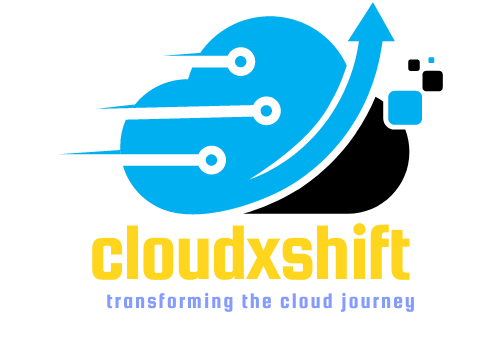-
AWS Announces IPv4 Pricing: Paradigm Shift in AWS Networking
Introduction Amazon Web Services (AWS), the leading cloud computing provider, has once again shaken the industry by unveiling its revolutionary new pricing structure for IPv4 addresses. In response to the growing demand for IP addresses and the need for more flexible and cost-effective solutions, AWS has redefined its IPv4 pricing model, promising substantial benefits to customers and simplifying network management. This article explores the key features and implications of AWS‘s new IPv4 pricing, heralding a paradigm shift in cloud networking. The Challenges of IPv4 Scarcity IPv4 addresses, the numerical labels assigned to devices connected to the internet, have been the backbone of network communication for decades. However, the ever-expanding internet…
-
Cloud Migration : Choosing Right Approach for your Business
Introduction: In today’s rapidly evolving digital landscape, cloud migration has become a critical consideration for businesses seeking scalability, flexibility, and cost-efficiency. However, embarking on a cloud migration journey requires careful planning and a well-defined strategy. In this article, we will explore the various cloud migration strategies available and help you choose the right approach for your business. Understanding Cloud Migration: Before diving into the strategies, let’s define cloud migration. Cloud migration refers to the process of transferring an organization’s digital assets, applications, data, and infrastructure from on-premises or legacy systems to the cloud. By embracing cloud technologies, businesses can leverage the benefits of scalability, agility, and accessibility. Assessing Business Needs:…
-
Embracing Cloud Migration for Long-Term Success
Introduction: In today’s rapidly evolving digital landscape, businesses face the ongoing challenge of staying competitive and adapting to technological advancements. One key solution that empowers organizations to future-proof their operations and achieve long-term success is cloud migration. By embracing cloud technologies, businesses can unlock a multitude of benefits, including scalability, flexibility, cost-efficiency, and enhanced security. In this article, we will explore how cloud migration can be a game-changer for your business, enabling you to navigate the future with confidence and secure a sustainable competitive advantage. Seizing the Power of Scalability: One of the greatest advantages of cloud migration is the ability to scale your business quickly and efficiently. Cloud platforms…
-
How Cloud Migration can Boost Business Agility ?
Business agility is a key factor in the success of any organization. The ability to respond quickly to changing market conditions, customer needs, and new opportunities is essential for staying competitive and achieving growth. One way to boost business agility is through cloud migration, which involves moving your organization’s data and applications to a cloud-based infrastructure. In this article, we will discuss how cloud migration can boost business agility and provide some tips on how to make the transition to the cloud as smooth as possible. What is cloud migration? Cloud migration refers to the process of moving an organization’s data, applications, and other business processes from on-premises infrastructure to…
-
Cloud Migration: Advantages and Challenges
Introduction Advantages of Cloud Migration Challenges of Cloud Migration Strategies for Overcoming Cloud Migration Challenges Conclusion Introduction Cloud migration refers to the process of moving an organization’s data, applications, and other business components from on-premises infrastructure to a cloud-based environment. Cloud migration is becoming increasingly popular among businesses due to its ability to offer enhanced security, scalability, and cost efficiency. However, the process of migrating to the cloud can be challenging and complex, requiring careful planning and execution to avoid potential issues. Organizations that migrate to the cloud can benefit from improved scalability and flexibility, increased cost-efficiency and savings, enhanced security and compliance, greater accessibility and collaboration, and improved…
-
Implementing Prometheus/Grafana for Enterprise Monitoring
As more organizations adopt cloud technologies and microservices architectures, monitoring has become a critical component of ensuring reliability and performance. Prometheus and Grafana are two popular open-source tools that can help organizations monitor and visualize their applications and infrastructure. However, implementing these tools in an enterprise environment can present some challenges. In this article, we will discuss the top 4-5 challenges that architects may face when implementing Prometheus/Grafana and the value this implementation can bring to the customer. Challenge #1: Data Collection and Storage Challenge #1: Data Collection and Storage Data collection and storage are critical components of a monitoring system, as they provide the foundation for analysis and insights.…
-
7 R’s of Cloud Migration: Strategies, Pros and Cons
Rehost (lift and shift) Replatform (lift, tinker, and shift) Repurchase (drop and shop) Refactor (re-architect) Rebuild (re-create) Retain (maintain) Replace Cloud migration is the process of moving an organization’s IT infrastructure, applications, and data to a cloud computing environment. It offers several benefits, including cost savings, increased agility, scalability, and improved security. However, cloud migration can be a complex and challenging process that requires careful planning and execution. The 7 R strategy of cloud migration provides a framework to guide organizations through the process of moving to the cloud. Rehost (lift and shift) The rehosting or lift-and-shift approach is the simplest and quickest way to migrate to the cloud. It…
-
AWS RDS:A Comprehensive Guide to Database Management
Introduction RDS Components RDS Interfaces RDS Multi-AZ & Read Replicas RDS Backups and Snapshots RDS Pricing Conclusion Introduction Amazon Web Services (AWS) provides a wide range of services for businesses to manage their IT infrastructure and applications in the cloud. One of the most popular services is Amazon Relational Database Service ( AWS RDS), which offers managed database services for several popular database engines, including MySQL, PostgreSQL, and SQL Server. In this comprehensive guide, we’ll explore the key features of Amazon RDS, including its components, interfaces, security, backup, monitoring, and pricing. RDS Components RDS is made up of several components, each of which plays an important role in managing your…
-
Cloud Native Applications and Microservices
Introduction: Cloud native applications and microservices are gaining popularity in the software development world due to their ability to provide faster time to market, improved scalability, and reduced costs. In this article, we will explore the key characteristics of cloud native applications and microservices, their advantages, and the technologies and best practices for building them. I. Definition of Cloud Native Applications and Microservices Cloud native applications refer to applications that are designed to run natively in the cloud, taking advantage of the cloud’s dynamic nature and scalability. Microservices, on the other hand, are a software architectural style that structures an application as a collection of loosely coupled services, each with…
-
DevOps Adoption and Implementation
Introduction What is DevOps? Benefits of DevOps Adoption and Implementation Getting Started with DevOps Adoption and Implementation Tips for Successful DevOps Adoption and Implementation Common Challenges in DevOps Adoption and Implementation Conclusion Introduction As organizations continue to shift towards cloud-based architectures, the need for efficient and effective software development and deployment processes has become increasingly important. DevOps is an approach that aims to bridge the gap between development and operations teams, enabling organizations to develop and deploy software more quickly and reliably. In this article, we will discuss the benefits of DevOps adoption and implementation, and provide guidance on how to get started. What is DevOps? DevOps is a set…


























